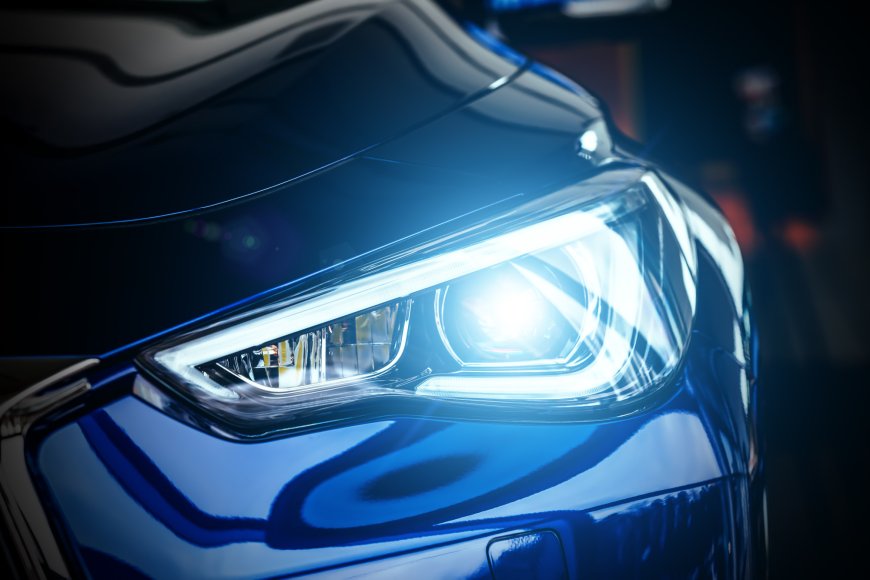Understanding LED Headlights
Benefits of LED Headlights
-
Brightness and Visibility: LED headlights produce a brighter and whiter light compared to halogen bulbs. This results in better illumination of the road, enhancing safety, especially during nighttime driving.
-
Longevity: LEDs have a significantly longer lifespan, often lasting up to 25,000 hours compared to the 1,000 hours of halogen bulbs.
-
Energy Efficiency: LED headlights consume less power, which can result in better fuel efficiency or extended battery life in electric vehicles.
-
Aesthetics: LEDs provide a modern and sleek look, which can improve the overall appearance of your car.
Key Factors to Consider
-
Compatibility: Ensure the LED headlights are compatible with your vehicle. Check the size, socket, and voltage requirements.
-
Brightness (Lumens): Lumens measure the brightness of the light. For optimal visibility, look for LED headlights with higher lumens.
-
Color Temperature: Measured in Kelvin (K), the color temperature affects the appearance of the light. A temperature between 5000K-6000K is ideal for a bright, white light.
-
Heat Dissipation: Good quality LED headlights should have efficient heat dissipation mechanisms to prevent overheating and ensure longevity.
-
Beam Pattern: The beam pattern is crucial for ensuring the light is directed properly on the road without blinding oncoming traffic.
Top LED Headlight Brands for 2024
-
Philips X-tremeUltinon LED: Known for their high quality and reliability, these LEDs offer excellent brightness and a lifespan of up to 12 years.
-
Hikari Ultra LED: These headlights are praised for their high lumens output and superior beam pattern.
-
Auxbeam F-16 Series: A budget-friendly option that doesn’t compromise on quality, providing bright light and efficient heat dissipation.
Installation Tips
-
Read the Manual: Always start by reading the instruction manual provided by the manufacturer.
-
Disconnect the Battery: For safety, disconnect the car battery before starting the installation.
-
Remove Old Bulbs: Carefully remove the old halogen bulbs from their sockets.
-
Install LED Bulbs: Insert the new LED bulbs into the sockets and ensure they are securely fitted.
-
Test the Lights: Reconnect the battery and test the new LED headlights to ensure they are working correctly.
Comparison Table: LED vs. Halogen Headlights
|
Feature
|
LED Headlights
|
Halogen Headlights
|
|
Lifespan
|
Up to 25,000 hours
|
Up to 1,000 hours
|
|
Brightness (Lumens)
|
3,000 - 12,000 lumens
|
700 - 1,200 lumens
|
|
Energy Consumption
|
15-45 watts
|
55-65 watts
|
|
Color Temperature
|
5000K - 6000K (white light)
|
3200K - 3500K (yellowish light)
|
|
Cost
|
$50 -$200 per pair
|
$10 -$50 per pair
|
|
Heat Dissipation
|
Built-in cooling fans or heat sinks
|
None
|
Common Mistakes to Avoid
-
Ignoring Compatibility: Always ensure the LED headlights are compatible with your car model.
-
Overlooking Beam Pattern: A poor beam pattern can cause glare and reduce visibility.
-
Choosing Based on Price Alone: Higher price doesn’t always mean better quality. Research and read reviews before purchasing.
FAQs
Can I install LED headlights myself?
Yes, most LED headlights are designed for easy installation. However, if you’re not comfortable, it’s best to seek professional help.
Will LED headlights fit all car models?
No, you need to check the compatibility with your car’s make and model. Refer to the vehicle’s manual or consult with the manufacturer.
Do LED headlights require a conversion kit?
In some cases, yes. If your car was originally fitted with halogen bulbs, you might need a conversion kit to install LED headlights.
How do I maintain my LED headlights?
Regularly clean the headlights to remove dirt and debris. Ensure the cooling fans or heat sinks are free from obstructions.
